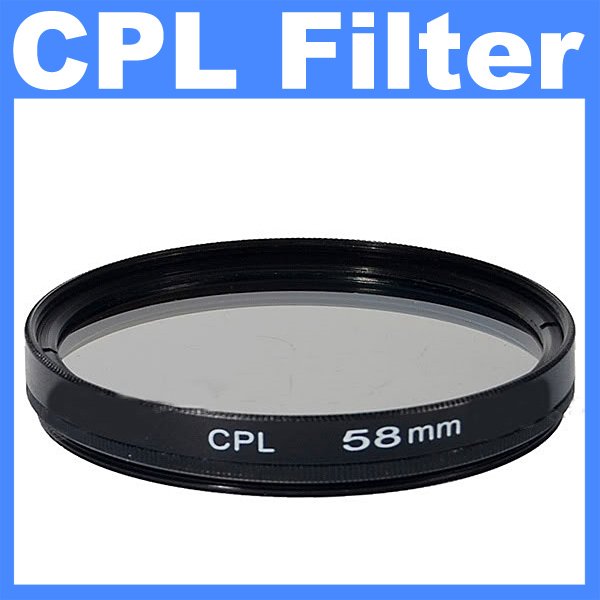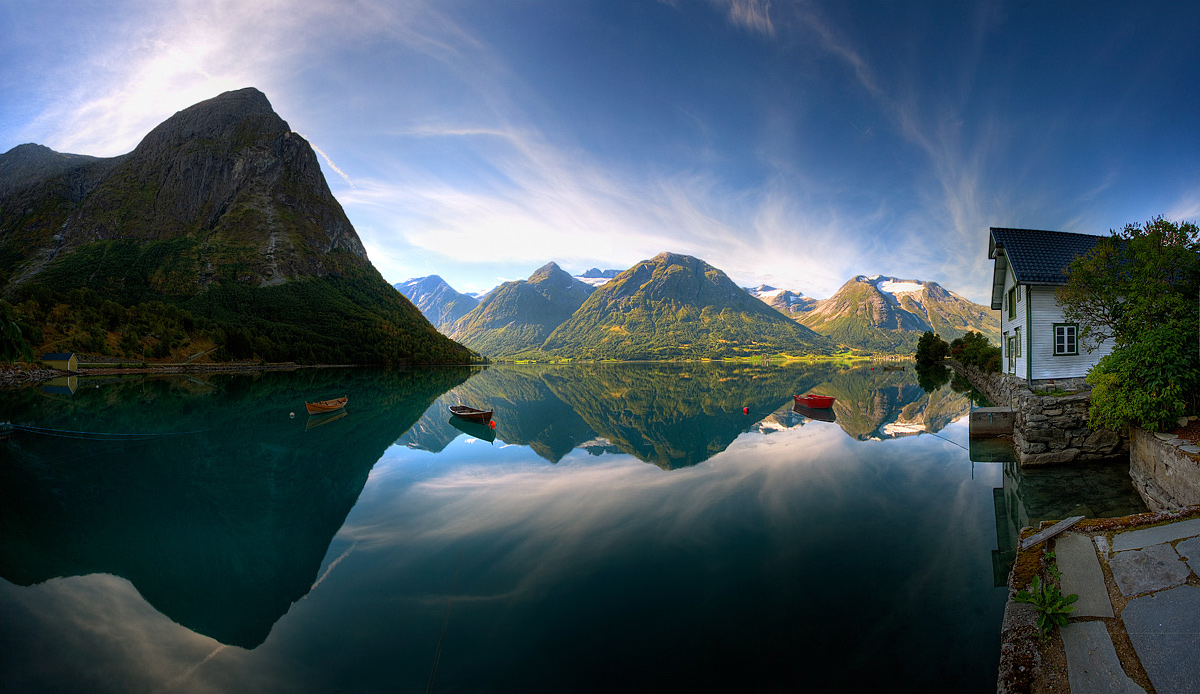CPL Filter – apa dan bagaimana…
Kali ini saya ingin membahas tentang CPL filter. Seharusnya saya perlu membahas terlebih dulu filter-filter lain yang dipakai sebagai tambahan pada lensa, namun saya rasa yang paling menonjol dan perlu dibahas lebih lanjut adalah CPL filter (dan mungkin nanti ND filter). Banyak yang bilang bahwa CPL filter adalah filter yang tidak dapat digantikan oleh image processing software apapun (keluarga adobe), sehingga mau tidak mau, harus dipasang filter ini jika menginginkan efek yang dihasilkan oleh CPL filter ini. Untuk UV filter saya rasa sudah cukup jamak dan tidak perlu dibahas karena fungsi utama UV filter hanyalah mengurangi efek ultraviolet sinar matahari dan sebagai tambahan pelindung lensa dari kontak langsung dengan dunia luar (baik sentuhan jari tangan maupun hal-hal yang tidak diinginkan lainnya).
Sebenarnya apakah CPL filter itu? CPL adalah singkatan dari Circular Polarizing Filter, yang sesuaid dengan namanya polarisasi yang dibentuk adalah circular atau lingkaran sehingga untuk mendapatkan efek-efeknya teknik yang digunakan adalah memutar-mutar filter ini sampai menghasilkan efek yang diinginkan. Sebenarnya ada juga yang disebut dengan Linear-PL cuma saya tidak begitu tertarik untuk membahasnya, di samping tidak terlalu jamak, di pasaran juga jarang-jarang orang yang menggunakannya.
Efek yang dihasilkan oleh filter CPL adalah menggelapkan langit dimana dikarenakan awan tidak begitu banyak berubah, kontras antara awan dengan langit akan semakin tinggi. Filter ini juga mengurangi pantulan sinar matahari pada benda sehingga foto yang dihasilkan akan tampak lebih natural dan saturasinya lebih tinggi karena berkurangnya pantulan sinar matahari tersebut. CPL filter juga dapat digunakan pada macro photography seperti obyek bunga, serangga dan lain-lain yang cenderung memantulkan cahaya matahari kuat. Polarizer juga lazim diaplikasikan pada kacamata yang digunakan oleh para pehobi mancing untuk mengurangi efek glare pada air, sehingga selain kondisi di bawah air akan tampak jelas, mata juga lebih aman karena tidak terpaparkan pada sinar matahari pada jangka waktu yang lama.
Pada pengaplikasiannya, filter ini cenderung banyak digunakan untuk foto-foto landscape dan panorama dengan latar langit yang biru karena pada prinsipnya, polarizer tidak akan banyak berfungsi jika langitnya gelap atau berawan. Langit harus benar-benar cerah dengan pasokan sinar matahari yang memadai.
Saya tadi sore sempat mencoba mengambil foto langit namun karena cuacanya mendung jadi hasilnya tidak begitu maksimal. Namun, saya sudah cuba mengaplikasikan filter ini untuk membuktikan efek yang dihasilkan yaitu pada LCD monitor dan juga untuk menghilangkan refleksi pada benda.
EXTRA TIPS FOR HDR
What you want to avoid
Here is a list of things to be on the lookout for when you process your images. Avoid those and no one should bother you about whether your image is HDR or not.
Halos
A signature of any method to decrease contrast in bracketed images, those appear whenever a dark and a bright zone are very close to each other, and especially on the edges of mountains on the skyline. They most frequently show in the bright areas but can also hide in shadows. You will need to get those right in the tone mapping process, often by reducing micro-contrast. If nothing else will do, then careful cloning can save the day, but it can be difficult and time consuming, and should be kept as a last resort solution.
Ghosts
Whenever some element in your composition moves between frames, there is a good chance that it will show as a ghost figure, since the tone mapping algorithm will mix a little bit of each image to reach its final result. Software has gotten a bit better at handling those, but it is still one of the worst things that can happen. If the ghost is simple enough, it is sometimes possible to use one of the bracketed images on another layer and clone/mask the ghost out, but be prepared for spending a lot of time looking at your image at 300%. Vegetation is hopeless, and I won't even bother bracketing anymore if there are both leaves and wind at the same time. HDR is mainly a technique for static subjects.
Inverted contrast
What HDR really does is reduce the brightness of highlights and increase the one of shadows. But if you take the process too far, you can obtain a situation where two neighbouring zones have inverted which one should be brighter than the other. This usually looks very, very ugly (if you haven't seen it before, open any image in photoshop and apply a strong inverted S curve on luminosity, then try not to throw up). More generally, it is a good idea to try and keep track on what parts of the image should be brighter than others, and verify that your tone mapped image still respects it, as a sanity check. If the sky is darker than the mountains, something is probably very wrong.
Noise
By its very nature, HDR processing will significantly increase noise, especially in the shadows. One way to limit it is to ask the tone mapping software to output an image slightly overexposed, but be prepared for the need of using noise reduction plugins.
Excessive saturation
The scenes we do HDR for are usually very contrasty, so they should also be very saturated, right? Well, not necessarily, no. Also, for some reason, the saturation applied by the tone mapping software seems much more artificial than the one you can get via photoshop. One rule of thumb is to fix saturation as the last step in the processing, just before final sharpening.
Excessive contrast
This is a hard one, and it can be difficult to draw the line and decide what is too much. As said before, though, contrast should not be gained in the tone mapping stage but later, once back on a LDR image inside photoshop. You will have to trust your eye and your memory of the scene. Does it really correspond to your memory of what you saw (and what you felt)? If you were seeing the image for the first time, would your first reaction be "wow, this is beautiful" or "wow, someone had fun with photoshop"?
For this tips i wanna say thanx a lot to my friend Mark David (Amsterdam) for sharing this much of info for all of us...^^
Secubit Tentang HDR
Ramai yang minat dgn photo HDR ni...entry ni khas untuk yg dah mahir tentang basic...macam mana nk mengambil gambar HDR..setting² yang diperlukan...
Now saya ingin berkongsi sedikit tips yg sering kita terlepas pandang tentang penghasilan HDR yang berkualiti..
Pengambilan Gambar
Selama ini mungkin ramai yang rasa dengan hanya mengambil 3-4 exposure yang berlainan sdah ckup tetapi sebenarnya dengan mengambil lebih iaitu lebih kurang 10-15 exposure adalah lebih baik. Ini bagi memastikan kita mendapat setiap detail yang ada with EXTRA SHRAPNESS...
Proccessing
Ada berbagai² jnis software yang digunakan utk memproses photo HDR ni akan tetapi seperti yang sy terangkan sebelum ini kami meyarankan anda supaya menggunakan Photomatix Pro..^^
setelah mengCOMBINED suma slide anda..pernahkah korang check beberapa detail yang penting atau hanya berpuas hati dengan penghasilan default software ini?...
PLEASE DON'T....kalau boleh sila cek beberapa detail enhancer yang tersedia seperti:
Strength (utk contrast), Luminosity (utk menerangkn shadow spot), Color Saturation (don't over do it...nnt jdi mcm watercolour..hehe), Microcontrast (noise control), Smoothing (balancekan white dgn black points), Gamma (always make sure u r at 1.0 lvel), Temperature (untuk menimbulkan mood yg sesuai), Saturation Highlights (adjust intensity bahagian cerah dlm gmbar), Saturation Shadows (opposite of saturation highlights), Highlight smoothness and Shadow smoothness ( for reducing mana² yang terover contrast), lastly Shadows Clipping ( utk kasi minimise noise yang terdapat dlm shadow)
so tu ja la kut wat masa ni....sory la klu entry agak serabai...pndai² paham sendiri ya..hehehe...klu ada kemusykilan..contact² je la ya....^^
Subscribe to:
Posts (Atom)



















































